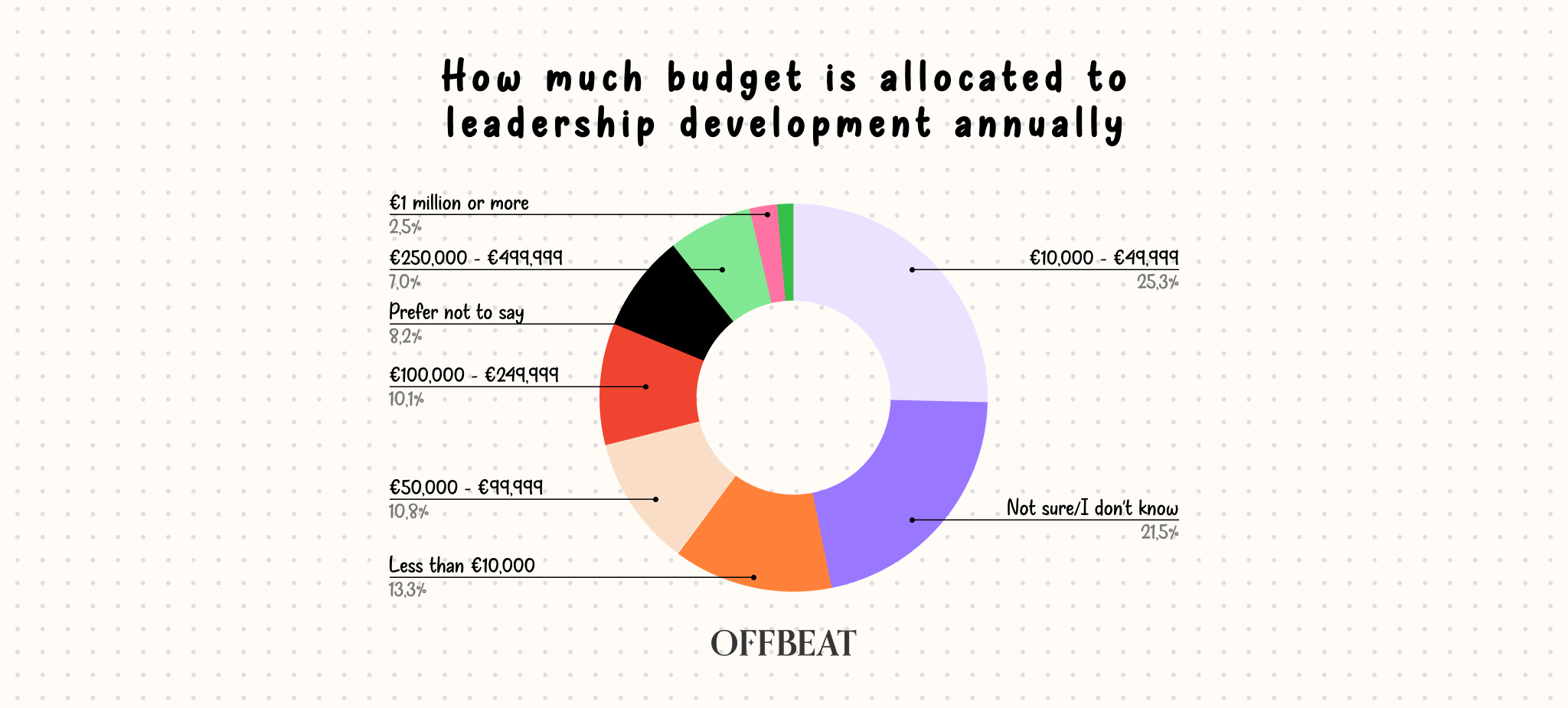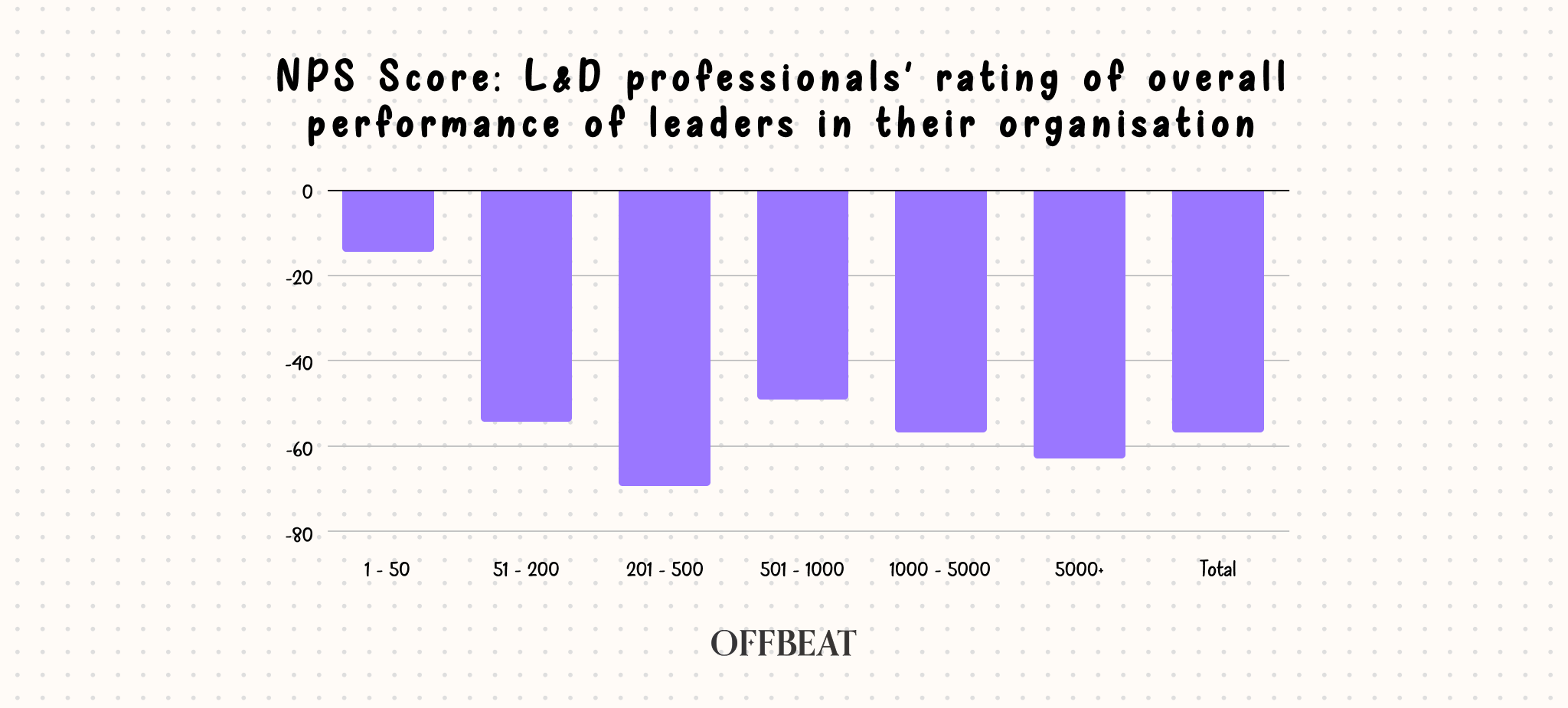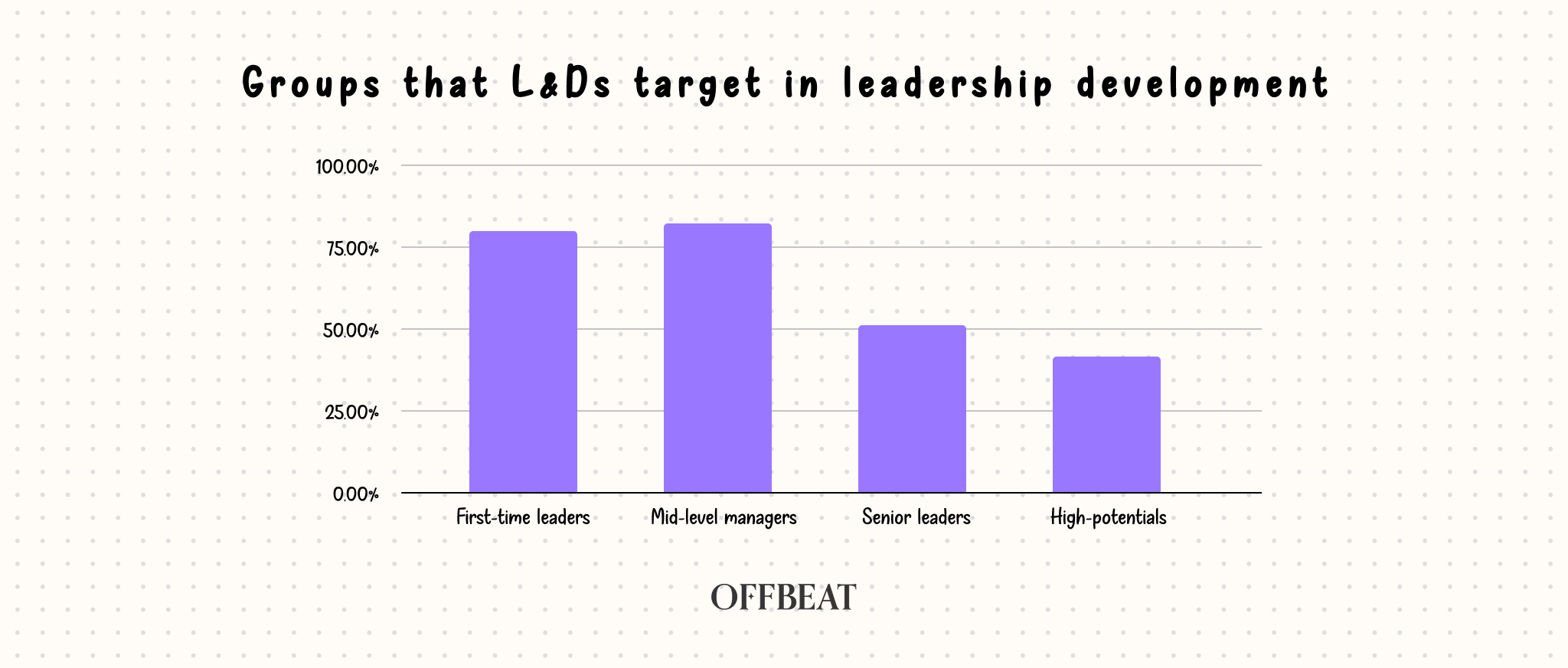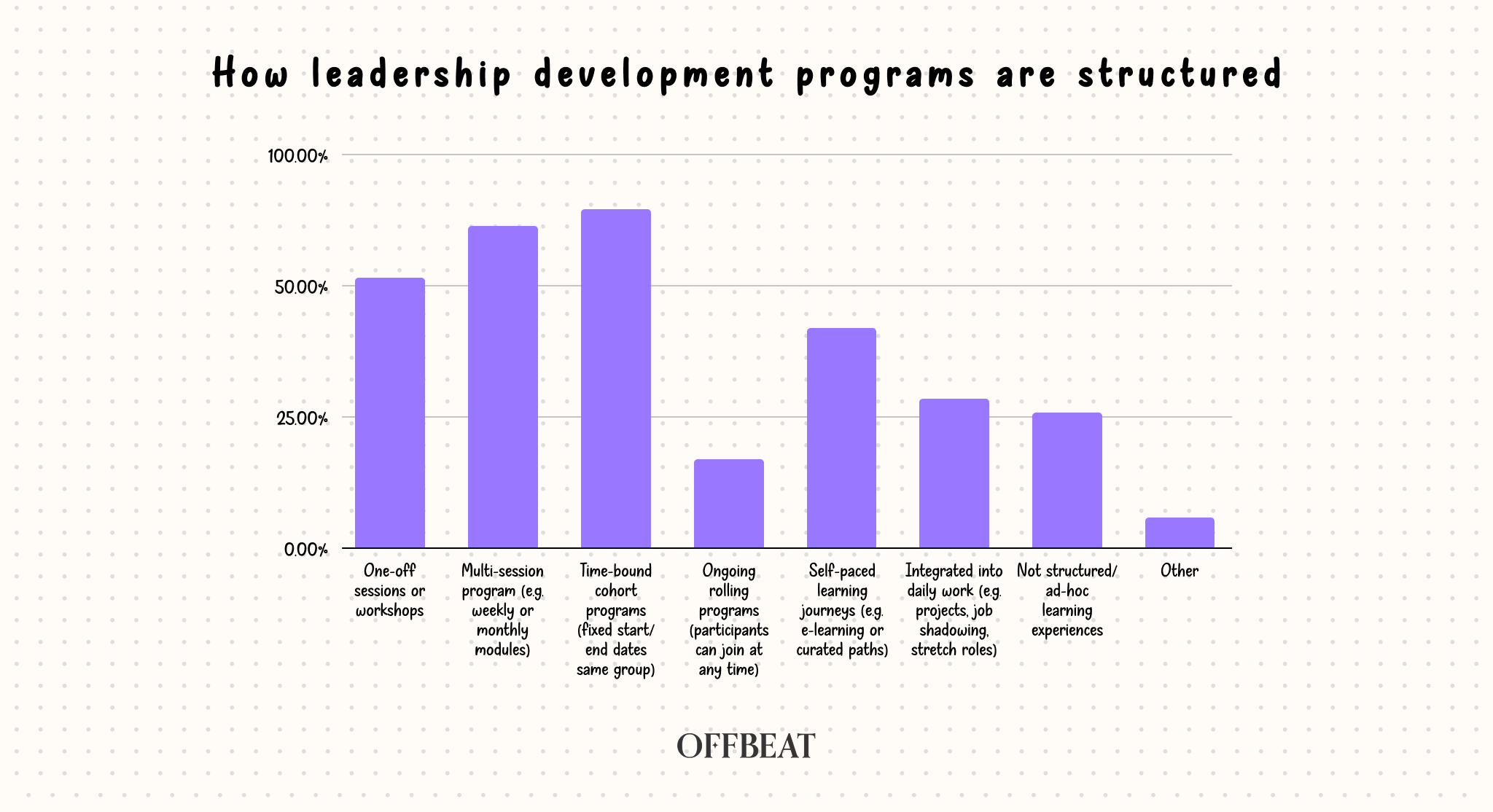Everywhere we ask, leadership development is top of mind for everyone. In small companies and big companies, L&Ds all over the world have the support of their leaders as a priority. This is not new. It’s been the same for the past couple of years.
Since our mission is to support L&D professionals in their work, we thought this would be a good topic to research. And so we did! During summer, we put into the wild a large survey, asking L&Ds everything from how they are designing leadership development programs, to what budgets their investing, and how they feel their leaders are performing.
We complemented the 158 responses we got with 10 qualitative interviews, and now we’re ready to share the results, as well as recommendations for the future.

If you’re looking to read a more in depth report, our fellows have access to the full results.
A quick overview
We’re not going to sugarcoat this.
Overall, things are not looking great. It’s visible leaders are struggling, and we’re struggling to support them in a way that works. To be clear, the investment is there in most cases. Across industries and company sizes, resources are allocated to leadership development.
Around 31,7% of our respondents mentioned they invest more than €50.000 yearly into leadership development. We believe that number is even greater, considering around the same ±30% mentioned they either don’t know or prefer not to say. Whether or not these large budgets yield the return on investment is another topic we’ll discuss in our recommendations.

Another proof that leadership development is on organizations’ radar is that almost half of our respondents (48.1%) mention their company has at least one full-time L&D working on this, while larger companies report having even up to 10 dedicated people focused fully on leadership development.
The rest of the 51.9% respondents mentioned that it’s either a shared responsibility across the L&D team, they have part-time people working on this, or there’s no “official” dedicated resources (which at the end of the day, they all mean the same thing: we’re doing it, but it’s part of an endless to do list).

While it’s far from maybe what we’d wish, it’s definitely way better than the investment in other areas of organizational learning.
The results, though, are not looking that great.
There’s no surprise that managers are struggling. Headlines have been screaming this for years:
- More Than 50% of Managers Feel Burned Out
- 6 Shocking Stats That Prove Middle Managers Are in Crisis
- Nearly half of UK managers too overwhelmed to do their job, research finds
So we weren’t surprised to learn that L&Ds have a good understanding of their challenges. Through the nature of our job, we tend to be quite connected to managers at all levels, not just because we’re trying to support them, but also because we partner with them on projects we run for other audiences and the entire organization.
To understand how L&Ds see their leaders, we asked them two questions:
- On a scale from 0 to 10, how would you rate the overall performance of leaders in your organization today?
- How would you describe the current state of leadership in your organization?

When we compiled the data we were a bit in shock. Of course, we all need to remember this is just the perception of a specific part of the organization - L&Ds - but a part that works with managers almost on a daily basis. So while we need to take the data with a grain of salt, it doesn’t mean it’s far from the truth.
Ok, I’m dragging on, because when we calculated the NPS of the first question, “On a scale from 0 to 10, how would you rate the overall performance of leaders in your organization today?”, the result was -57. If you’re not familiar with the NPS methodology, the score can be from -100 to 100. So yes, we can have negative scores, and L&Ds from all company sizes score their leaders at below 0.

The answers to the second question, paint a more qualitative picture of why L&Ds have this picture of their leaders.
- Inconsistency is high up top. This tells us that, of course, the low numbers represent a median, not the entire leadership population. L&Ds just believe the quality of leadership varies widely.
- The poor leadership quality seems to come from the fact that leaders are overwhelmed, which is no surprise. Aren’t we all? But of course, the pandemic, the AI revolution, the economic crisis, put as much if not more pressure on leaders, than on everyone else.
- The third qualitative answer that scored best gave a more optimistic view of things, because L&Ds feel that leaders are just in the process of growing and improving.

To close the overview, I also want to address why I mentioned at the beginning the fact that L&Ds are also struggling. When asked how impactful L&Ds believe their own efforts are, only 17,7% mentioned they think they are very impactful. The majority (50%) believe that they are somewhat impactful, while 17,7% are unsure about their results or believe they’re limited.









.svg)






.png)
.png)
.png)
.png)
